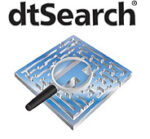SlickEdit, the venerable maker of source-code editors, has released SlickEdit 2012 with a retooling of its underlying user-interface technology, enhanced code beautification, and support for the Android SDK.
Matthew Etter, director of software development at SlickEdit, said the new release marks a milestone. SlickEdit 2012 uses the Trolltech/Nokia Qt cross-platform framework, as it provides a native interface “but allows us to do custom controls that look the same on all platforms.” He said SlickEdit had leveraged X11 as the UI programming platform across its Linux, Mac OS and Unix versions, but even though they were leveraging Apple’s version of X11, it wasn’t a true Mac experience.
“Apple shipped X11 to allow Unix-based applications to run on Mac,” Etter said, “but it wasn’t user friendly. We looked at Qt, and the proof of concept was the Mac. We released the Mac-only release with the new UI framework around New Year’s. We knew if we could do the Mac, we could do all the platforms. The Mac version needed the help the most.”
Another goal of the UI re-architecture was to “peel off the crust of 25 years of code and revisions, to muck out the stables, so to speak,” Etter said. “Now that we have the solid footing, we will be making design and usability changes. We like where we’re going to be able to springboard from here.”
Etter said customers have been asking to float editor windows outside the main IDE window. “Folks have said, ‘Geez, I want to be able to drag this particular window over here on a second monitor and have it maximized.’ But the application wasn’t architected for that. It’s always been a single-window application,” he said, noting that that specific change “is front and center in our 2013 release plan.”
A second major change in SlickEdit 2012 is an improved code beautifier. “Our main focus has been power source-code editing,” Etter said. “But having a framework that allows you to get the code exactly the way you, or your manager, or your customer want to see it is a very powerful thing.”
The retooled beautification framework is available for C, C++ and Objective C, and moving forward, SlickEdit will bring C#, Java and JavaScript support. “A lot of times, departments or working groups will have a preference for how code is formatted,” Etter explained. “For instance, are the curly braces on the same line as the opening syntax of an IF statement? There are a lot of variables, as languages are all formatted a certain way and folks are used to seeing it that way.” He added that SlickEdit 2012 provides code profiles as a starting point for developers. The framework also lets developers work the code the way they like to see it, and beautify it before it is sent to others.
The last feature Etter highlighted in the new release is support for the Android SDK. “We didn’t see support for Android developers outside of Eclipse,” he said.
Etter said developers either use one or two languages to write on multiple platforms, or use multiple languages to write to one or two platforms. “Developers can use our tools to create Android projects whether they’re writing on Unix, Linux or Mac, and Android projects in Eclipse can be opened in our product to get all the great editing features we provide,” he said.
For all its capabilities, SlickEdit remains what he called “a niche product. We’re not on 90% of developer desktops. But our users are extremely loyal because we’re responsive, and with our community forums, the company responds to customers, but customers also help each other.”
SlickEdit, based in Morrisville, N.C., is as stable as its product. J. Clark Maurer founded the company in 1988 and still serves as CTO. “He’s still here, writing code every week. We don’t have a lot of churn,” Etter said. He should know: He’s the newest member of the management team, and he joined in 2005.






